Identifying Feelings
Program Transcript
Hawkens (Interview): My name is Jennifer Hawkens. I'm a preschool teacher here at Yerba Buena Gardens Childrens center. My kids are three years old. I started with them just last year, and we stay together as a cohort, um, until they go to kindergarten. So they have a chance to really develop deep relationships with their teachers and with each other, and with the community.
Hawkens: Okay, I'm gonna give everybody one of these. There you go…
Hawkens (Interview): I've been preparing students to develop emotional literacy. We've been talking about emotions, we've been playing games around that, and we've been playing the game with the little faces on the stick. We've been playing that for a while as a way of helping them identify their own emotions and other people's emotions.
Hawkens: So what is this one? What is that?
Student: Scared.
Hawkens: You think he's scared? Or surprised?
Student: He's sad!
Hawkens (Interview): I'd introduce one at a time. Oh, this is, you know, Bob, and he's really happy. What makes you happy? And we'd pass it around.
Hawkens: What about this one? You have a lot?
Student: Proud!
Hawkens: That could be proud. Yeah, he could be proud. He could be excited.
Student: Can I have proud?
Hawkens: He's like super happy!
Student: Can I have proud?
Hawkens: Yes. You can have that one. You can have that one. Okay, you ready for the next one? Okay. Here we go. What about that one?
Student: Angry.
Hawkens: How can you tell he's angry?
Student: Because he says, I'm, I'm angry.
Hawkens: How can you tell? Look at his face. Can you make an angry face Andres? Show me an angry--ooh! You look angry. We're gonna read the book about David. Remember No David? David got angry.
Hawkens (Interview): I chose the No David book, first because there's a lot of emotional content in that book, about this little boy being naughty, and I tried to cue the kids into using the face puppets, to identify the face, and what that looks like, and what the face of the character in the book looks like.
Hawkens: All right, who is that?
Student: David.
Hawkens: David. It says No, David. What is he doing?
Student: I think he's talking to the goldfish.
Hawkens: Do you think he's too excited?
Student: No.
Hawkens: What do you think?
Student: I think he's talking to the goldfish.
Hawkens: I think he's excited. Show me excited. What would an excited face look like? Yeah! Can you find it there? Huh! Look at Mama. What do you think Mommy feels like?
Students: Angry.
Hawkens: She's got her hands on her hips. Show me angry.
Hawkens (Interview): The idea of the lesson was just helping children cue in to emotions of a character in a book and why those emotions might have happened, and then being able to have something concrete, a visual, that they can say, that's it. That's the same.
Hawkens: Look at his face. How do you think David feels?
Student: Like this one.
Hawkens: Like that one. Yeah. He's kind of, what do you think he feels like? Surprised?
Hawkens (Interview): The activity with the emotion sticks we've done a lot with all different kinds of books, but I find it works best when there's nice simple illustrations that show features of the face. That's one of the cues to helping kids learn emotional literacy is kind of cuing in on the visuals of another person.
Hawkens: Now look at him. His mom said, go to your room. What do you think David feels like?
Student: Mad.
Hawkens: He looks kind of mad. Show me your mad face. Which one looks mad? That's right! Look at his face. Now what is he doing?
Students: He's playing baseball.
Hawkens: Should he play-- It says, not in the house, David.
Student: Outside!
Hawkens: Outside. It's safe outside, not inside. What's gonna happen?
Student: He's gonna break the glass.
Hawkens: Yeah. Look what happened. Do you think-- he didn't mean to do it, huh? He feels bad. You feel sad sometimes when you make a mistake. Davey, come here. Now what does he look like?
Student: He's going like this!
Hawkens: Yeah, he's holding his arms up. What do you think he wants?
Student: He wants mommy.
Hawkens: He wants his mommy. That's right…
Hawkens (Interview): I love the ending of the book, where, you know, this little boy's been pretty naughty, and then at the end his mommy still loves him anyway, and there's this nice loving end to it. I think that's very satisfying, and it's important for kids to know. Well, you can make mistakes. And you can have all these crazy emotions. But you're still loved and you can do things to make yourself feel better.
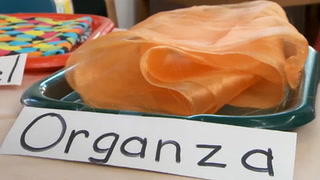
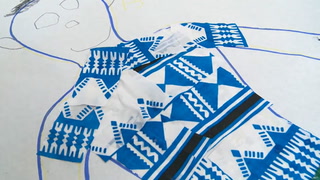
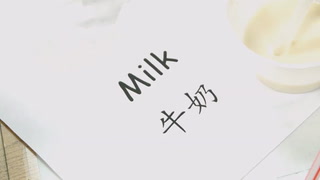

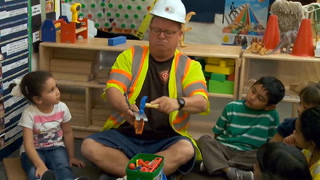

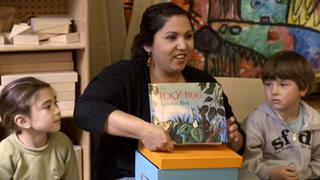

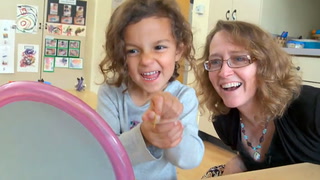
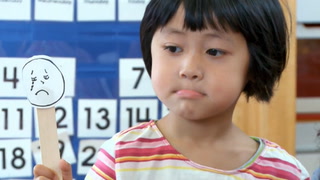








16 Comments
Esther Nelson Jul 19, 2019 10:34pm
I love the puppet stick faces. It was a way for students to identify and single out emotions that were read in the book. As they read the book, the understood the various emotion displayed by the character in the story. It also connected t students with the main message of being loved by the mother no matter the various emotions displayed. The teacher also respected and value the various emotions of the students their interpretation of facial gestures was respected. She also actively engaged the students with the sticks in their hands during reading them. There was a student who wasn't so verbal but every time his peers selected a stick based on his teacher's question, it motivated him to look at his stick and find a similar expression.
Adaeze Ekulide Jun 28, 2019 2:43pm
1. The puppets have different types of faces. Sad, happy, suprised. Ms Hawkins gives each child a puppet and prompts each child to say what type of face the puppet has.
2. Ms Hawkins builds her lesson around the book by having the children identify the emotional faces of the puppet and connect the faces to the character in the story. "No David no". She builds her lesson around the book in order for the children to understand how emotions are expressed.
3. The lesson helps children develop empathy by creating awareness of how it feels when we are sad, happy, suprised. Children will be able to connect these feelings.
Nini Bui Mar 25, 2018 8:29pm
Elizabeth Havrilla Mar 25, 2018 9:16am
Heather Huntington Feb 15, 2018 11:16am